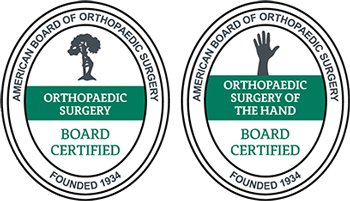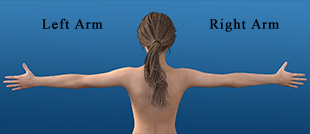Cumulative Trauma Disorder

“Pain in the arm, a woman touches a sore arm” by wuestenigel licensed under CC BY 2.0
You’ve probably heard of a repetitive strain injury, overuse syndrome, or regional musculoskeletal disorder. These are all terms for what’s known as cumulative trauma disorders, conditions that often occur in the workplace and affects many people in Dallas and throughout the country. If you’ve been working the same job for years and have noticed pain, tingling, or numbness in your hands or joints, talk to a doctor to find out if it’s a cumulative trauma disorder. With the right treatment plan, your doctor can help alleviate your symptoms and keep the problem from getting worse.
Contents
What Is a Cumulative Trauma Disorder?
Cumulative trauma disorder (CTD) describes a variety of disorders and injuries that happen to your musculoskeletal system, most frequently in the hands and arms. The activities you do on a daily basis cause strain on your body. Normally, when you rest your body is able to recover from these tiny strains. However, repetitive motions, overuse or forceful motions, poor posture, vibrations (like from machinery), and compression can cause sustained trauma to your system.
Tendons, ligaments, joints, muscles, nerves, and blood vessels make up the musculoskeletal system. Many jobs require activities that put strain on specific portions of your musculoskeletal system. Over the course of time, your body can’t heal itself from these tiny traumas, and the problem builds up into a CTD. It’s important to note that CTDs aren’t disease to be cured but conditions to be managed. Common examples of CTDs are carpal tunnel syndrome, trigger finger, tendonitis, radial tunnel syndrome, bursitis, and more.
What Causes Cumulative Trauma Disorders?
CTDs are common in workplaces, and a variety of factors can contribute to developing a CTD. Repetitive motion, especially if it’s a small or awkward movement, is a major CTD culprit. Poor posture, whether it’s because of the work you do or simply how you sit in your chair, is another. Some people develop CTDs because their workspace isn’t set up ergonomically or they aren’t handling tools properly. Doing jobs that require forceful grasping, especially over long periods, can also trigger a CTD.
Two important factors in developing CTDs are length of time and lack of rest. You may not notice anything wrong at first, or it may present as a small injury or irritation. When you repeat damaging motions without enough time in between, the body doesn’t have enough time to heal and the small traumas start to add up to a larger injury. Over the course of months or years repeating these stressful movements, you may develop a CTD.
What Symptoms Do People Experience?
CTD symptoms vary based on which part of the body is injured, and whether your nerves or your tendons are primarily affected. If the problem is in your nerves, you may experience tingling, numbness, pain, and loss of strength or movement in the affected area. If the problem is in your tendons, common symptoms are aches and tenderness, pain or discomfort during specific movements, loss of movement, and swelling. In either case, you may notice that the affected area is stiffer when you wake up in the morning, and that you’ve lost coordination or mobility in your joints.
Keep in mind that many of these symptoms overlap, and that a list of common symptoms is not comprehensive. Only your doctor can diagnose the specific cause of your CTD, so be sure to track your symptoms and note how often and when they occur.
What Treatments Are Available for Cumulative Trauma Disorders?
Your doctor will start with non-surgical treatments for your CTD. Each treatment is specific to your diagnosis, but treatments have elements in common. Some typical steps your doctor will have you take include resting the affected site, wrapping or splinting the area to keep it immobile, and using heat, ice, or both to help your tissue recover. You may need to do stretching and strengthening exercises, and in some cases a physical therapist can be helpful.
Non-surgical treatment usually works well for CTD patients, but severe cases will need surgery. For example, severe carpal tunnel syndrome often requires a surgical release procedure during which your surgeon cuts a ligament in your wrist to release the pressure causing the syndrome. It can be done with an endoscope as an outpatient procedure with local anesthesia.
Making changes to your workplace is essential in ensuring proper management of CTDs. This will involve a discussion with your doctor and your employer, and could require some trial and error before you find a solution, so keep at it. Even if your injury is related to the workplace, you should discuss your hobbies and other activities with your doctor as well. You may be exacerbating your CTD outside of your work.
How Can You Prevent Cumulative Trauma Disorders?
Whether you’ve had one CTD and would like to prevent another or you want to lower your risk of developing a CTD, prevention is very important. You can do a few simple things like pay attention to your posture, stretch and exercise areas of the body that you use a lot at work, and make sure you’re using any tools or machinery correctly.
If you start to notice a work-related soreness or injury, don’t put off seeing a doctor. That small pain is your body’s way of telling you trauma is building up in that area. Your doctor can help you treat the symptoms with heat and cold, anti-inflammatory medication, and physical therapy. You can also assess how to improve the ergonomics of your work situation so your symptoms don’t develop into a CTD.
Your Dallas Hand and Wrist Doctor
The Hand and Wrist Institute serves the greater Dallas area for hand, wrist, elbow, and general complaints. If you think you’re suffering from a CTD or want medical assistance in preventing CTDs from developing, schedule an appointment and start your journey to better musculoskeletal health. You can contact us online or via telephone for a consultation at either our Dallas or our Southlake office. We look forward to helping treat and manage your hand and wrist issues and getting you back to feeling your best.

























